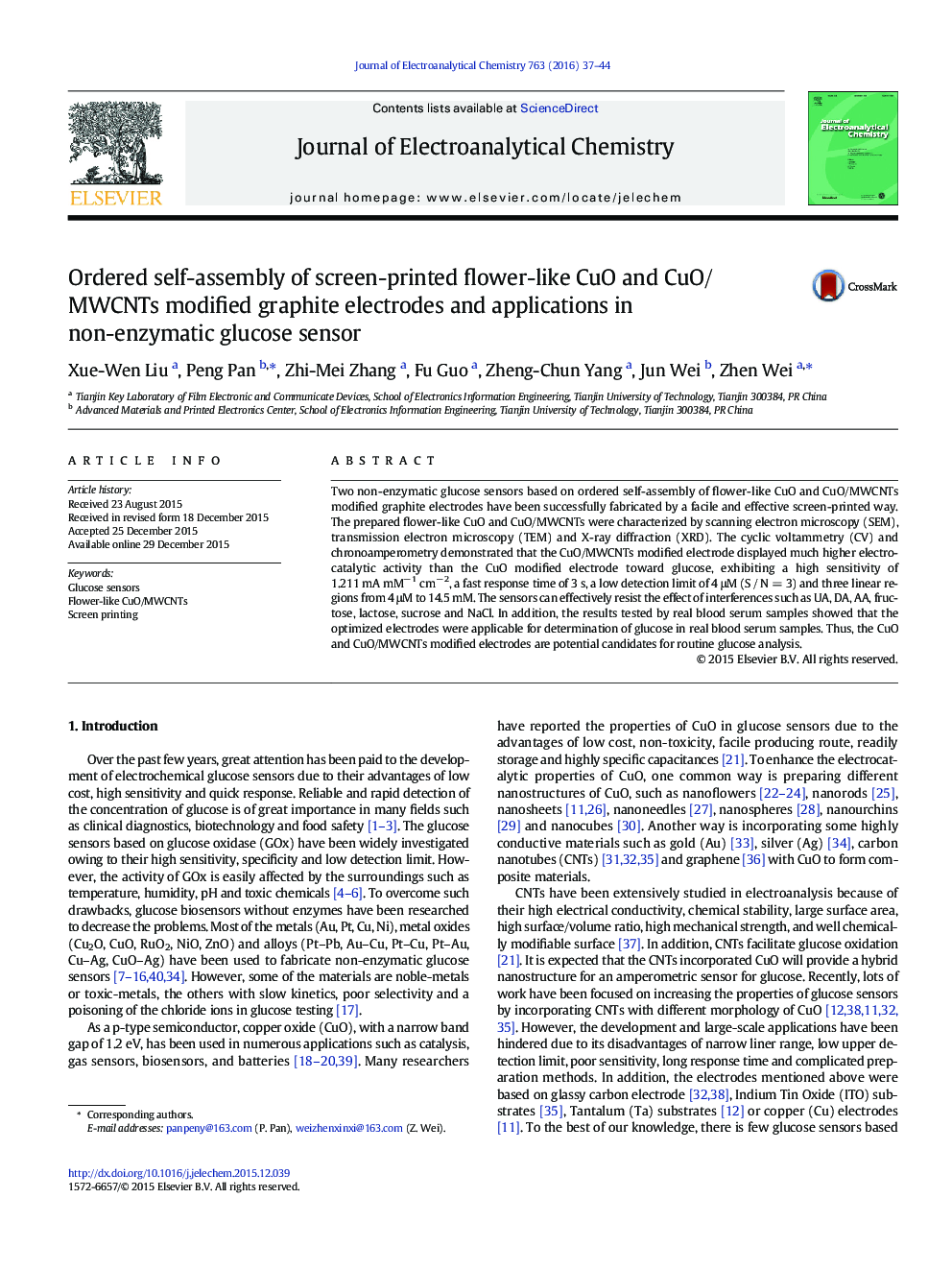| Article ID | Journal | Published Year | Pages | File Type |
|---|---|---|---|---|
| 218106 | Journal of Electroanalytical Chemistry | 2016 | 8 Pages |
•Two non-enzymatic glucose sensors have been fabricated by screen-printed way.•Nanosheet turned to microflower after printed and evenly distributed on the electrode.•The sensors showed high sensitivity, low detection limit and three linear regions.
Two non-enzymatic glucose sensors based on ordered self-assembly of flower-like CuO and CuO/MWCNTs modified graphite electrodes have been successfully fabricated by a facile and effective screen-printed way. The prepared flower-like CuO and CuO/MWCNTs were characterized by scanning electron microscopy (SEM), transmission electron microscopy (TEM) and X-ray diffraction (XRD). The cyclic voltammetry (CV) and chronoamperometry demonstrated that the CuO/MWCNTs modified electrode displayed much higher electrocatalytic activity than the CuO modified electrode toward glucose, exhibiting a high sensitivity of 1.211 mA mM− 1 cm− 2, a fast response time of 3 s, a low detection limit of 4 μM (S / N = 3) and three linear regions from 4 μM to 14.5 mM. The sensors can effectively resist the effect of interferences such as UA, DA, AA, fructose, lactose, sucrose and NaCl. In addition, the results tested by real blood serum samples showed that the optimized electrodes were applicable for determination of glucose in real blood serum samples. Thus, the CuO and CuO/MWCNTs modified electrodes are potential candidates for routine glucose analysis.
Graphical abstractFigure optionsDownload full-size imageDownload as PowerPoint slide
